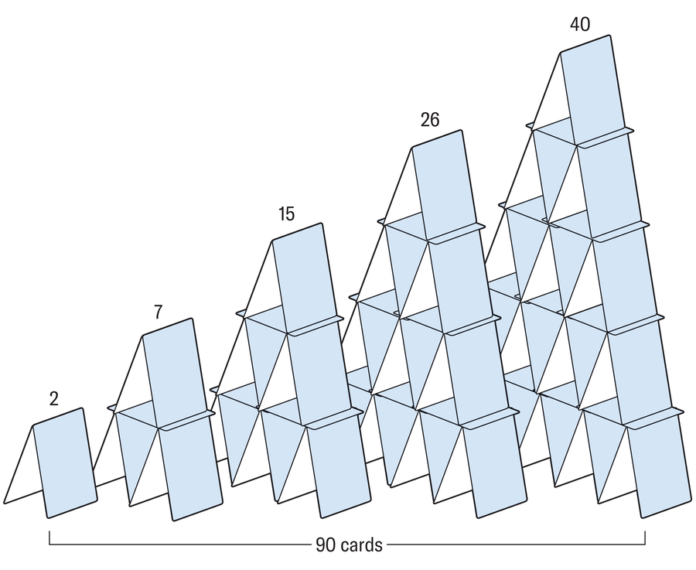Math Puzzle: Play Architect with These Houses of Cards
Jovan built these five houses of cards using a total of exactly 90 playing cards. Now he wants to build one large house consisting of exactly 100 cards. Can such a house of cards exist?
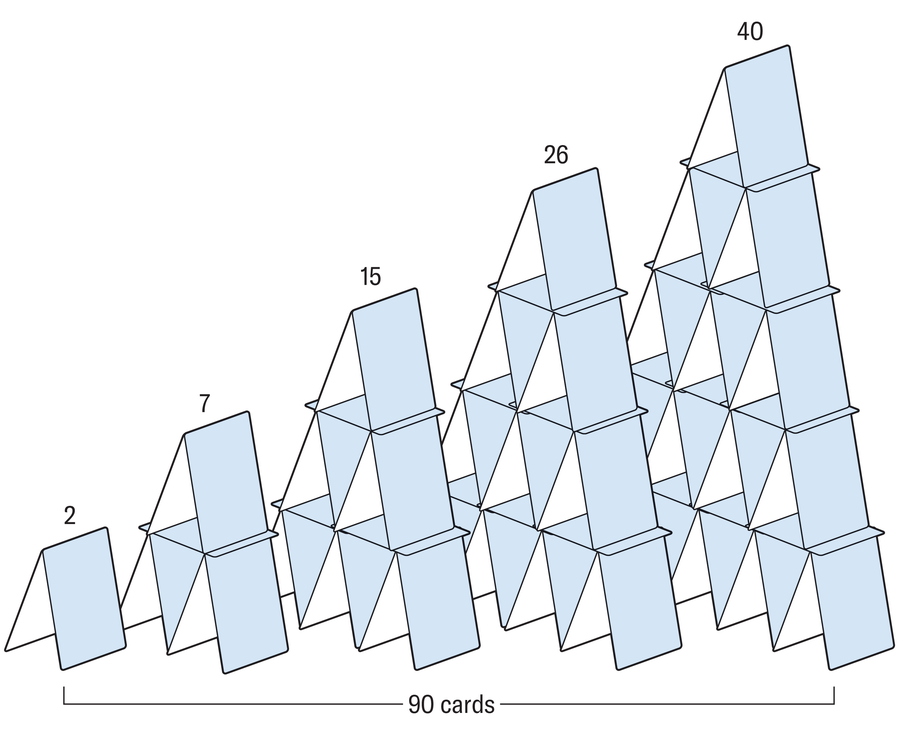
Amanda Montañez; Source: Hans-Karl Eder/Spektrum der Wissenschaft (reference)
You can build a house of cards with exactly 100 cards; it will have eight floors.
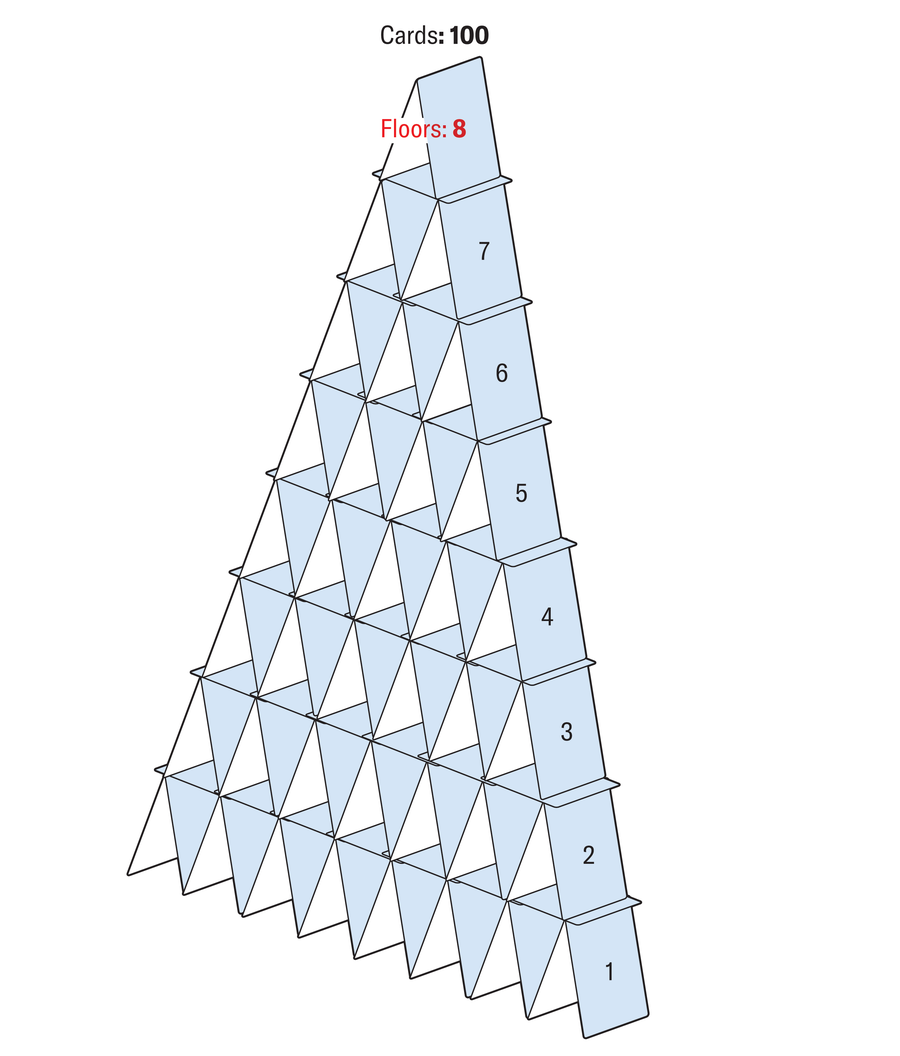
Amanda Montañez; Source: Hans-Karl Eder/Spektrum der Wissenschaft (reference)
The number of cards increases level by level in a constant sequence. If you want to prove the puzzle’s answer, you have to show that 100 is a term in this sequence.
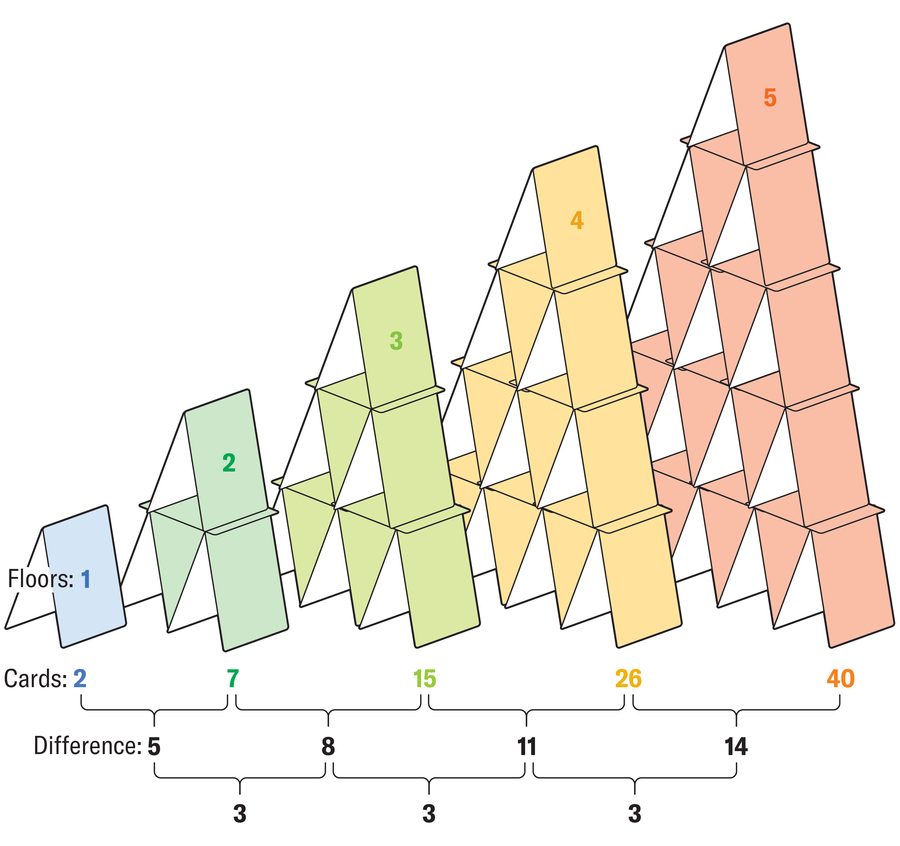
Amanda Montañez; Source: Hans-Karl Eder/Spektrum der Wissenschaft (reference)
Because the difference between terms always changes the same amount—the “second difference” is constant—you can conclude that the sequence, with number of cards K and number of rows x, can be represented by a quadratic equation of the form K = ax2 + bx + c.
First, determine the values for a, b and c. This can be achieved using a system of three equations:
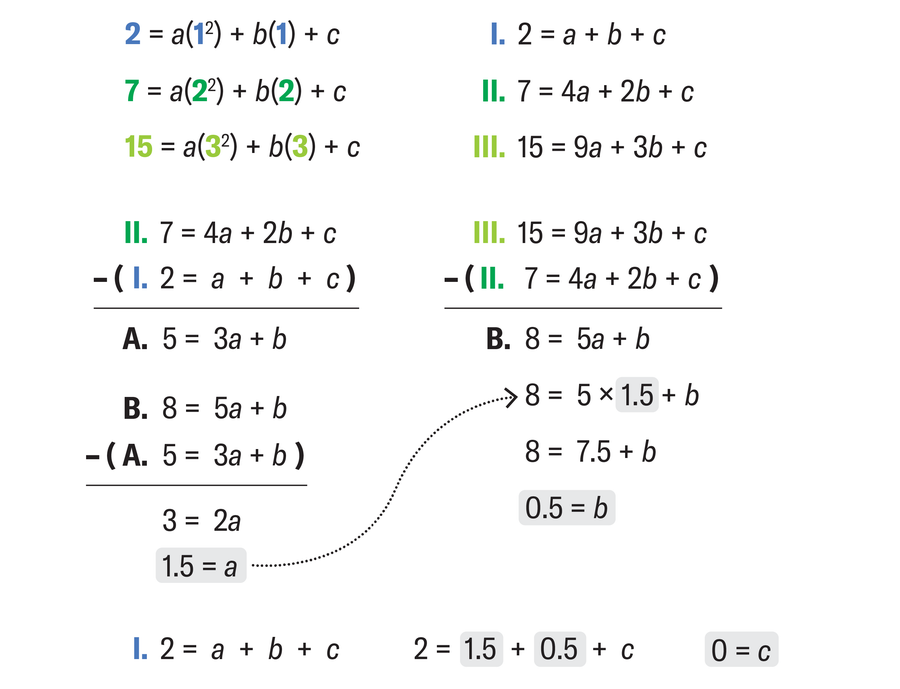
Amanda Montañez; Source: Hans-Karl Eder/Spektrum der Wissenschaft (reference)
With the values found for a, b and c and the calculated value for K = 100, you can now solve the quadratic equation.
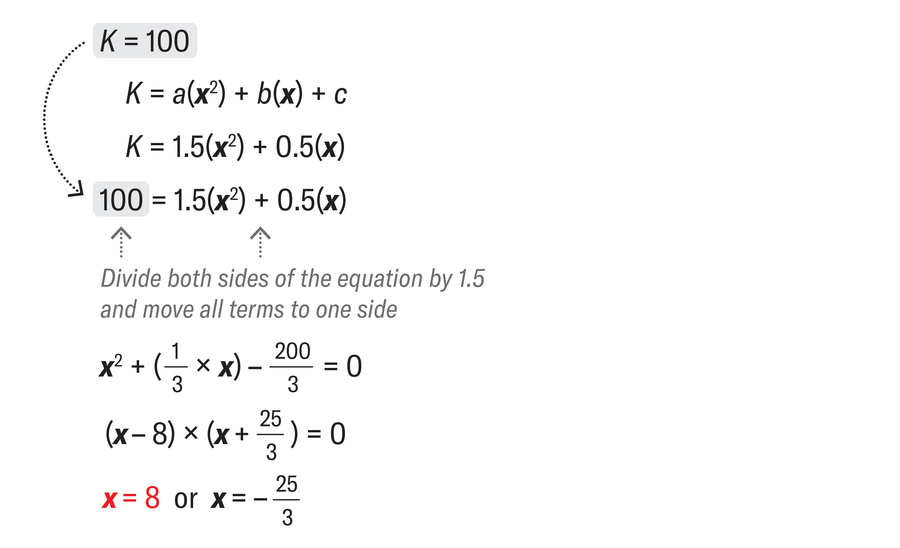
Amanda Montañez; Source: Hans-Karl Eder/Spektrum der Wissenschaft (reference)
One of the values for x is a natural number that lets you build a house of cards out of exactly 100 cards.
We’d love to hear from you! E-mail us at games@sciam.com to share your experience.
This puzzle originally appeared in Spektrum der Wissenschaft and was reproduced with permission.

